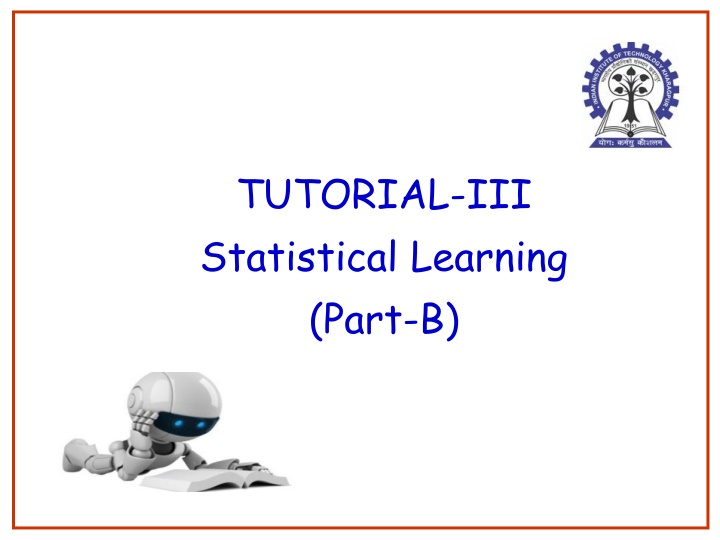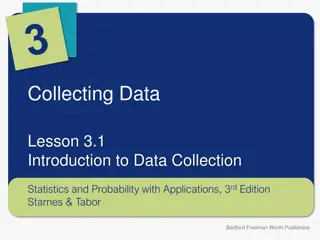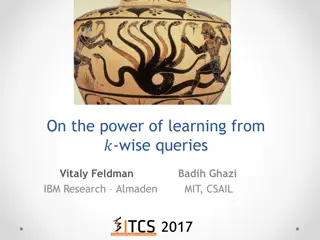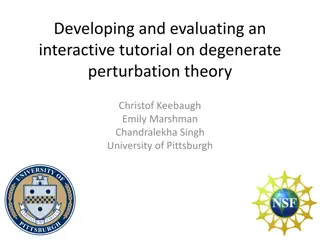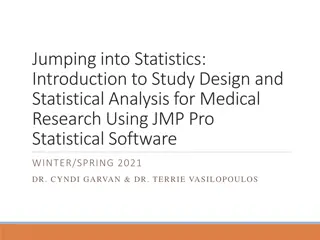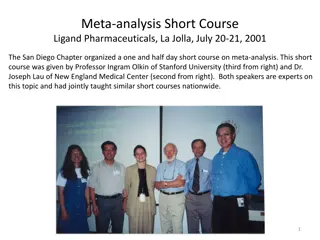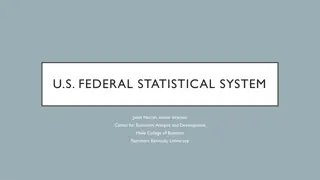TUTORIAL-III Statistical Learning (PART-B)
Consider hypothesis testing scenarios, types of errors, probabilities, assumptions for T-distribution tests, and interpretations of significance levels. Match statistical tests to their purposes and understand the significance of p-values in hypothesis testing.
Download Presentation

Please find below an Image/Link to download the presentation.
The content on the website is provided AS IS for your information and personal use only. It may not be sold, licensed, or shared on other websites without obtaining consent from the author.If you encounter any issues during the download, it is possible that the publisher has removed the file from their server.
You are allowed to download the files provided on this website for personal or commercial use, subject to the condition that they are used lawfully. All files are the property of their respective owners.
The content on the website is provided AS IS for your information and personal use only. It may not be sold, licensed, or shared on other websites without obtaining consent from the author.
E N D
Presentation Transcript
TUTORIAL-III Statistical Learning (Part-B) 1
OBJECTIVES 1. Consider a hypothesis H0where 0= 5 against H1where 1> 5. The test is? a) Right tailed b) Left tailed c) Two tailed d) Cross tailed 2
OBJECTIVES 2. Type 1 error occurs when? a) We reject H0if it is True b) We reject H0if it is False c) We accept H0if it is True d) We accept H0if it is False 3
OBJECTIVES 3. The probability of Type 1 error is referred as? a) 1- b) c) d) 1- 4
OBJECTIVES 4. What is the assumption made for performing the hypothesis test with T-distribution? a) the distribution is non-symmetric b) the distribution has more than one modal class c) the distribution has a constant variance d) the distribution follows a normal distribution 5
OBJECTIVES 5. If a hypothesis is rejected at 0.6 Level of Significance then ______________ a) it will be rejected at any level b) it must be rejected at 0.5 level c) it may be rejected at 0.5 level d) it cannot be rejected at 0.5 level 6
OBJECTIVES 6. In a two tailed test when a Null Hypothesis is rejected for a True Alternative Hypothesis then it has ____________ a) Type 1 error b) Type 2 error c) No error d) Many errors 7
OBJECTIVES 7. Match the items of List - II with the items of List - I and select the code of correct matching List - I List - II (a) Chi-square Test (i) Testing the significance of the differences of the mean values among more than two sample groups. (b) ANOVA (F-test) (ii) Testing the goodness of fit of a distribution (c) Z test (iii) Testing the significance of the difference of the mean values between two large sized samples (d) t test (iv) Testing the significance of the difference of the mean values between two small sized samples when population standard deviation is not available a) b) c) d) (a) - (i), (b) - (ii), (c) - (iii), (d) - (iv) (a) - (iv), (b) - (iii), (b) - (ii), (d) - (i) (a) - (i), (b) - (ii), (c) - (iv), (d) - (iii) (a) - (ii), (b) - (i), (c) - (iii), (d) - (iv) 8
OBJECTIVES 8. In a hypothesis test, what does the p value signify? a) smallest level of significance for rejection of Null Hypothesis b) largest level of significance for rejection of Null Hypothesis c) smallest level of significance for acceptance of Null Hypothesis d) smallest level of significance for acceptance of Null Hypothesis 9
OBJECTIVES 9. Arrange the following steps in the process of hypothesis testing in proper sequence: A. Select the level of significance B. Setup null and alternative hypothesis C. Establish the decision rule D. Performance computations E. Select test statistics F. Draw conclusion Choose the correct answer from the options given below a) b) c) d) A, B, C, D, E, F A, B, E, D, C, F B, A, C, D, E, F B, A, E, C, D, F 10
OBJECTIVES 10. The choice of one-tailed test and two-tailed test depends upon a) Null hypothesis b) Alternative hypothesis c) Composite hypothesis d) None of these 11
NUMERICALS 1. A drug company is testing a drug intended to increase heart rate. A sample of 100 yielded a mean increase of 1.4 beats per minute, with a standard deviation known to be 3.6. Since the company wants to avoid marketing an ineffective drug, it proposes a 0.001 significance level. Should it market the drug? ANS: 12
NUMERICALS 2. The Environmental Protection Department requires a mill to aerate its effluent so that the mean dissolved oxygen (DO) level is above 6.0mg/L. To maintain the compliance, the Department collects air samples at 12 randomly selected dates. The data collected is given below. 5.85 6.28 6.50 6.21 5.94 6.12 6.65 6.14 6.34 6.19 6.29 6.40 The Department requires a strong evidence that the mean DO is high. It is required to test it with significance level, = 1%. Answer the following questions. Assume that the population data follows normal distribution. a) b) c) d) e) What should be the null and alternate hypothesis? Which test statistics: z-, t- or 2 test is applicable in this case? According to your test statistics, calculate the critical value. From the sample data, calculate the test value. Decide if the null hypothesis is to be accepted or rejected. 13
NUMERICALS 3. It is claimed that an automobile is driven on the average more than 20,000 kilometres per year. To test the claim, a random sample of 25 automobile owners is asked to keep a record of the kilometres they travel. The random sample showed an average of 23500 kilometres and a standard deviation of 3900 kilometres. It is planned to test the above with parametric based hypothesis testing. Assume 5% confidence level. a) b) c) d) e) What should be the null and alternate hypothesis? Which test statistics: z-, t- or 2 test is applicable in this case? According to your test statistics, calculate the critical value. From the sample data, calculate the test value. Decide if the null hypothesis is to be accepted or rejected. 14
NUMERICALS 4. A survey was conducted among 500 students who are studying either in government funded collages (GVT) or privately funded colleges (PVT). The objective of the survey to see the choice of classroom based learning (C) over the Internet based learning (I). Learning C C oll eg es I G V T P V T 75 125 200 60 240 300 135 365 500 It is proposed to apply the 2-test to verify if there is exist any association between colleges and learning . a) Decide the null and alternate hypotheses in this case. Justify your answer. b) Calculate the 2 value from the sample data. c) Test the hypothesis with 5% confidence level. Learning C o l l e g e s C I G V T P V T 75 (54) 125 (146) 200 15 60 (81) 240 (219) 300 135 365 500
NUMERICALS 5. The accompanying data on breakdown voltage of electrically stressed circuits was read from a normal probability plot that appeared in the article Damage of Flexible Printed Wiring Boards Associated with Lightning-Induced Voltage Surges (IEEE Transactions on Components, Hybrids, and Manuf. Tech., 1985: 214 220). The straightness of the plot gave strong support to the assumption that breakdown voltage is approximately normally distributed. 1470 1510 1690 1740 1900 2000 2030 2100 2190 2200 2290 2380 2390 2480 2500 2580 2700 ANS:- 16
